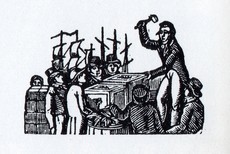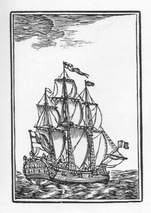|
When last we left the boat-build, the hull was something like a tortilla, held in form by a pair of belly pans while my favorite skipper puttied and filled gaps in the interior surface. Since a floppy taco of a hull hardly inspires confidence, the next steps involved building structure into the boat.
Anyway, bulkhead. Sailors quickly noticed that bulkheads not only kept cargo where it was stowed, they also made the hull sturdier and kept water walled up in the likely event of a leak. So the Boat-That-Is-Presently-Nameless got some bulkheads. The bow has a fore-and-aft bulkhead onto which the headstay will be anchored, there's a side-to-side bulkhead that will support a deck-stepped mast, as well as sealing off the bow so that it will be watertight. And a smaller bulkhead at the aft end of the future centerboard trunk will probably host the mainsheet block. Alright already, enough words: some photos:
7 Comments
A. Thwartships
6/16/2015 10:55:07 am
Great series. As the proud descendant of a long line of Limeys and Squareheads I'd hasten to point out the benefits them bulkheads offer in fightin the gyrations water'll cause a boat due to free surface effect. (think Flyin Scot (or canoe or tiny pram) with that no-bulkhead free communication of water, transom to hood ornament) Swimmin time. Beaucoup de bulkheads - two thumbs up !
Reply
Amy
6/17/2015 01:32:15 am
Thank you A!
Reply
Thwart
6/18/2015 07:23:21 am
The site for learning!, including a bit of farming, boatbuilding, and maritime lingo. (I thought etymology was the study of bugs) 6/17/2015 12:12:04 am
Is this EC craft the same length as the FrankenScot? It looks longer in the photos. Also will it be a true dinghy or will it have a small keel on it? I assume it will be again, a two man crew to man her. RLM
Reply
Amy
6/17/2015 01:35:08 am
Hey RLM!
Reply
HHN92
6/18/2015 03:42:51 pm
Them's gonna be some long oars...
Reply
Amy
6/20/2015 01:59:09 am
Well, you know what they say..."Long oars, big oarlocks."
Reply
Leave a Reply. |
About the Blog
A lot of ground gets covered on this blog -- from sailboat racing to book suggestions to plain old piffle. FollowTrying to keep track? Follow me on Facebook or Twitter or if you use an aggregator, click the RSS option below.
Old school? Sign up for the newsletter and I'll shoot you a short e-mail when there's something new.
Archives
June 2024
Categories
All
|


 RSS Feed
RSS Feed
